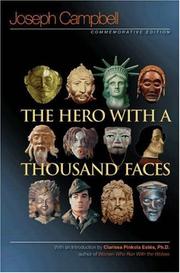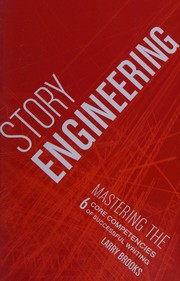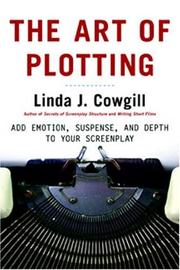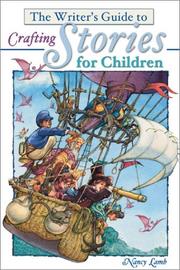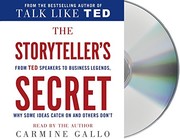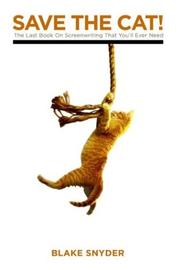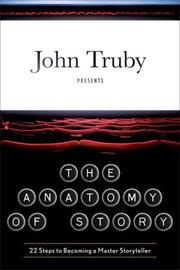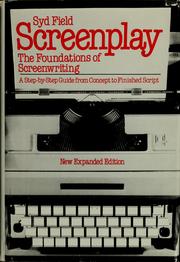Are you an aspiring writer looking to master the art of storytelling? Look no further! Dive into the world of narrative construction with these 20 best books about story structure. From classic guides to modern insights, these books offer invaluable advice on crafting compelling plots, developing dynamic characters, and building immersive worlds. Whether you’re a novice seeking guidance or a seasoned author looking to refine your skills, these story structure books are essential additions to your literary toolkit. Get ready to unlock the secrets of storytelling and take your writing to the next level with these must-read resources!
Contents
- 1 20 Best Story Structure Books
- 2 Save the Cat! Writes a Novel
- 3 The Anatomy of Story
- 4 Story: Substance, Structure, Style, and the Principles of Screenwriting
- 5 The Hero with a Thousand Faces
- 6 Story Engineering
- 7 The Art of Dramatic Writing
- 8 The Writer’s Journey: Mythic Structure for Writers
- 9 The Seven Basic Plots: Why We Tell Stories
- 10 Story Genius: How to Use Brain Science to Go Beyond Outlining and Write a Riveting Novel
- 11 The Plot Whisperer: Secrets of Story Structure Any Writer Can Master
- 12 Writing the Breakout Novel
- 13 The Art of Plotting: Add Emotion, Suspense, and Depth to your Screenplay
- 14 The Storytelling Animal: How Stories Make Us Human
- 15 The Writer’s Guide to Crafting Stories for Children
- 16 The Storyteller’s Secret: From TED Speakers to Business Legends, Why Some Ideas Catch On and Others Don’t
- 17 Save the Cat! The Last Book on Screenwriting You’ll Ever Need
- 18 The Anatomy of Story: 22 Steps to Becoming a Master Storyteller
- 19 Screenplay: The Foundations of Screenwriting
- 20 Story Engineering: Mastering the 6 Core Competencies of Successful Writing
- 21 The Art of Dramatic Writing: Its Basis in the Creative Interpretation of Human Motives
- 22 Final Thoughts on Best Story Structure Books
- 23
20 Best Story Structure Books
Save the Cat! Writes a Novel
by Jessica Brody
Save the Cat! Writes a Novel by Jessica Brody is a game-changing book on story structure for writers of all levels. With clear, practical advice and a touch of humor, Brody introduces the “Save the Cat! Beat Sheet” – a guide to crafting compelling novels that keep readers hooked from start to finish. This book about story structure breaks down the essential elements of storytelling, from creating a strong opening that grabs attention to delivering a satisfying ending that leaves a lasting impact. Whether you’re a seasoned author looking to refine your skills or a beginner eager to learn the ropes, this story structure book is a must-read. Brody’s approachable style and insightful tips make complex storytelling concepts easy to understand and apply. So, if you’re ready to take your novel-writing game to the next level, Save the Cat! Writes a Novel is the ultimate guide to mastering the art of storytelling.
The Anatomy of Story
by John Truby
The Anatomy of Story by John Truby is a comprehensive and insightful book on story structure. Truby, a renowned screenwriter and script doctor, offers a fresh and innovative approach to understanding the art of storytelling. He breaks down the elements of a compelling narrative, from character development to plot construction, and provides practical advice on how to create powerful and resonant stories.
What sets this book about story structure apart is Truby’s emphasis on the importance of character and the emotional core of a story. He argues that a strong character-driven narrative is the key to engaging an audience and creating a lasting impact. Truby’s unique perspective and in-depth analysis make this book on story structure an invaluable resource for writers, filmmakers, and anyone interested in the craft of storytelling.
Whether you’re a seasoned storyteller or just starting out, The Anatomy of Story offers a wealth of knowledge and inspiration to help you master the art of storytelling and create unforgettable narratives. It’s a must-read for anyone looking to elevate their storytelling skills and craft compelling, emotionally resonant stories.
Story: Substance, Structure, Style, and the Principles of Screenwriting
by Robert McKee
Robert McKee’s book on story structure, Story: Substance, Structure, Style, and the Principles of Screenwriting, is a comprehensive guide for aspiring writers and filmmakers. McKee delves into the fundamental elements of storytelling, offering valuable insights into the principles of crafting compelling narratives. Through the exploration of substance, structure, and style, McKee provides readers with a deep understanding of the art of storytelling and the essential components that make a story resonate with audiences.
With a focus on the principles of screenwriting, McKee’s book about story structure is a valuable resource for anyone looking to hone their storytelling skills. The author’s expertise in the field shines through as he dissects the intricacies of plot development, character arcs, and the importance of creating meaningful and engaging stories. McKee’s engaging and insightful approach makes this book on story structure a must-read for anyone passionate about the art of storytelling.
The Hero with a Thousand Faces
by Joseph Campbell
The Hero with a Thousand Faces by Joseph Campbell is a renowned book on story structure that explores the common elements found in myths and folklore from cultures around the world. Campbell delves into the concept of the “monomyth,” or the hero’s journey, and identifies a universal pattern that underlies all narratives. He outlines the stages of the hero’s journey, from the call to adventure to the ultimate return, and discusses the archetypal characters and motifs that appear in myths across different cultures. Through his analysis, Campbell argues that these stories serve as a reflection of the human experience and offer timeless wisdom and guidance for navigating life’s challenges. The book about story structure has had a profound influence on the field of mythology and storytelling, and its insights have been applied to literature, film, and other forms of creative expression. It continues to be a valuable resource for writers, scholars, and anyone interested in understanding the deeper meaning and significance of stories.
Story Engineering
by Larry Brooks
Story Engineering by Larry Brooks is a comprehensive guide for writers looking to master the art of storytelling. This book on story structure provides a unique and practical approach to crafting compelling and impactful stories. Brooks breaks down the elements of storytelling, including character development, plot, theme, and structure, in a way that is easy to understand and apply to your own writing.
Through clear and insightful analysis, Brooks demonstrates how these storytelling components work together to create a cohesive and engaging narrative. Whether you’re a novice writer looking to understand the fundamentals of storytelling or a seasoned author aiming to elevate your craft, this book about story structure offers valuable insights and techniques that can help you take your writing to the next level. With its actionable advice and engaging style, Story Engineering is an essential resource for anyone looking to master the art of storytelling.
The Art of Dramatic Writing
by Lajos Egri
The Art of Dramatic Writing by Lajos Egri is a timeless classic in the world of storytelling. This renowned book on story structure delves deep into the essential elements of crafting compelling and powerful narratives. Egri’s insightful analysis covers character development, plot construction, and the crucial elements that make a story resonate with audiences. Through his guidance, writers can learn how to create multi-dimensional characters, build tension, and construct narratives that leave a lasting impact. Egri’s teachings have been influential in shaping the work of countless playwrights, screenwriters, and novelists, making this book about story structure an indispensable resource for any aspiring storyteller. Whether you’re a seasoned writer or just starting out, The Art of Dramatic Writing is a must-read for anyone looking to master the art of storytelling.
The Writer’s Journey: Mythic Structure for Writers
by Christopher Vogler
The Writer’s Journey by Christopher Vogler is a renowned book on story structure, often considered a must-read for writers. Vogler takes readers on a journey through the mythic structure of storytelling, drawing from the works of Joseph Campbell and the concept of the hero’s journey. This book about story structure delves into the universal patterns and archetypes found in myths, fairy tales, and classic literature, providing writers with a framework for creating compelling and resonant narratives.
Vogler’s insightful analysis and practical advice make this story structure book an invaluable resource for both aspiring and experienced writers. Through examples from popular films and literature, he illustrates how the hero’s journey can be applied to various genres and storytelling mediums. Whether you’re a novelist, screenwriter, or playwright, The Writer’s Journey offers a comprehensive guide to crafting stories that captivate and resonate with audiences. With its rich insights and practical guidance, this book is a treasure trove for anyone seeking to master the art of storytelling.
The Seven Basic Plots: Why We Tell Stories
by Christopher Booker
The Seven Basic Plots: Why We Tell Stories by Christopher Booker is a comprehensive exploration of the fundamental patterns that underpin all types of storytelling. In this book on story structure, Booker delves into the essence of narrative and identifies seven archetypal plots that form the basis of every tale ever told. From the classic ‘Overcoming the Monster’ and ‘Rags to Riches’ to the more complex ‘Voyage and Return’ and ‘Tragedy’, he illustrates how these recurring themes resonate with audiences across cultures and time periods.
By dissecting the universal elements of storytelling, Booker offers a fascinating insight into the essence of human experience and the ways in which we make sense of the world through narrative. Whether you’re a writer, filmmaker, or simply a lover of stories, this book about story structure is an invaluable resource for understanding the deep-rooted patterns that shape the tales we tell. It provides a rich foundation for anyone seeking to create or analyze narratives, making it an essential addition to the library of anyone interested in storytelling and story structure.
Story Genius: How to Use Brain Science to Go Beyond Outlining and Write a Riveting Novel
by Lisa Cron
Story Genius by Lisa Cron is a groundbreaking book on story structure that goes beyond traditional outlining techniques. Using the latest findings in brain science, Cron reveals how to tap into the power of storytelling to create a truly captivating novel. With a focus on the internal journey of the protagonist, this book delves deep into the psychology of storytelling, showing writers how to connect with readers on a profound level.
Through engaging exercises and insightful analysis of successful novels, Story Genius provides a roadmap for crafting a rich and compelling narrative. Cron’s approach challenges writers to think beyond plot and delve into the emotional core of their characters, resulting in a story that resonates with readers on a visceral level. Whether you’re a seasoned writer or just starting out, this book about story structure will revolutionize the way you approach storytelling, guiding you to unleash the true power of your narrative.
The Plot Whisperer: Secrets of Story Structure Any Writer Can Master
by Martha Alderson
The Plot Whisperer: Secrets of Story Structure Any Writer Can Master by Martha Alderson is a comprehensive guide for writers looking to master the art of storytelling. This book on story structure provides invaluable insights and practical tips to help writers create compelling and well-structured stories. Alderson, known as the “Plot Whisperer,” offers a step-by-step approach to crafting strong storylines, developing multi-dimensional characters, and building tension and conflict to keep readers engaged. She delves into the core elements of storytelling, including plot, character development, and pacing, and provides exercises and worksheets to help writers apply these concepts to their own work. Whether you’re a seasoned writer or just starting out, this story structure book is a valuable resource for honing your craft and taking your storytelling to the next level. With Alderson’s expert guidance, aspiring writers can gain the skills and confidence to create impactful and unforgettable stories.
Writing the Breakout Novel
by Donald Maass
Writing the Breakout Novel by Donald Maass is a comprehensive book on story structure that offers valuable insights and practical advice for aspiring authors. Maass, a renowned literary agent, draws on his extensive experience in the publishing industry to provide a detailed roadmap for crafting a compelling and commercially successful novel.
The book delves into the essential elements of storytelling, exploring character development, plot dynamics, and thematic resonance. Maass also offers valuable strategies for elevating the emotional impact of a novel and creating unforgettable, page-turning narratives.
Whether you’re a novice writer or a seasoned author looking to take your craft to the next level, Writing the Breakout Novel offers a wealth of actionable guidance and inspiring examples. This book about story structure is a must-read for anyone looking to enhance their understanding of narrative technique and craft a novel that stands out in today’s competitive market. With its insightful analysis and practical exercises, it’s an indispensable resource for anyone serious about honing their storytelling skills.
The Art of Plotting: Add Emotion, Suspense, and Depth to your Screenplay
by Linda J. Cowgill
The Art of Plotting: Add Emotion, Suspense, and Depth to your Screenplay by Linda J. Cowgill is a comprehensive guide for writers looking to enhance their storytelling skills. This insightful book on story structure delves into the intricacies of creating compelling plots that capture the audience’s attention and evoke powerful emotions.
Cowgill provides practical techniques and exercises to help writers infuse their screenplays with suspense, depth, and emotion. She emphasizes the importance of crafting well-structured plots that keep the audience engaged from beginning to end. With a focus on character development and conflict, this book about story structure offers valuable insights into creating multi-dimensional and relatable characters that drive the plot forward.
Whether you’re a novice writer or a seasoned professional, The Art of Plotting is a valuable resource for mastering the art of storytelling. With its clear and engaging writing style, this story structure book is a must-read for anyone looking to elevate their screenplay writing skills and captivate audiences with compelling narratives.
The Storytelling Animal: How Stories Make Us Human
by Jonathan Gottschall
The Storytelling Animal: How Stories Make Us Human by Jonathan Gottschall is a captivating exploration of the human fascination with narratives. This thought-provoking book delves into the evolutionary and psychological reasons behind our innate love for storytelling. Gottschall argues that stories are not just a form of entertainment, but an essential part of what makes us human.
Throughout the book, Gottschall delves into the science behind why we are drawn to stories, and how they shape our understanding of the world. He discusses the ways in which stories help us make sense of our experiences, connect with others, and even shape our beliefs and behaviors. This book on story structure is a compelling blend of science, psychology, and literary analysis, making it a must-read for anyone interested in the power of storytelling.
Whether you’re a writer, reader, or simply curious about the human mind, The Storytelling Animal offers a fascinating exploration of the ways in which stories influence and define us. It’s a story structure book that will leave you with a deeper understanding of the role of narratives in our lives.
The Writer’s Guide to Crafting Stories for Children
by Nancy Lamb
The Writer’s Guide to Crafting Stories for Children by Nancy Lamb is a comprehensive book on story structure that provides invaluable insights for aspiring children’s authors. With clear and practical advice, Lamb delves into the essential elements of storytelling, offering guidance on character development, plot construction, and narrative pacing. This book about story structure also explores the nuances of writing for young readers, addressing the unique challenges and opportunities that come with creating children’s literature.
Readers will find a wealth of tips and exercises to help them hone their storytelling skills, as well as examples from classic and contemporary children’s literature to illustrate key concepts. Whether you’re a seasoned writer looking to improve your craft or a newcomer to the world of children’s storytelling, this story structure book is an indispensable resource for anyone passionate about creating compelling and meaningful stories for young audiences.
The Storyteller’s Secret: From TED Speakers to Business Legends, Why Some Ideas Catch On and Others Don’t
by Carmine Gallo
The Storyteller’s Secret: From TED Speakers to Business Legends, Why Some Ideas Catch On and Others Don’t by Carmine Gallo is a captivating book about the power of storytelling in communication and business. Gallo explores the art of storytelling and delves into the reasons why some ideas resonate with audiences while others don’t. Through real-life examples of successful TED speakers and business leaders, the author uncovers the secrets behind their compelling narratives and how they have used them to captivate and persuade their audiences.
This book on story structure provides valuable insights into the elements of a powerful story, and how to craft a narrative that engages and inspires. Gallo’s writing is both informative and engaging, making it an enjoyable and enlightening read for anyone looking to enhance their communication skills and make their ideas stand out.
Whether you’re a business professional, public speaker, or simply someone interested in the art of storytelling, this book about story structure is sure to leave you with a deeper understanding of the impact of a well-crafted narrative.
Save the Cat! The Last Book on Screenwriting You’ll Ever Need
by Blake Snyder
Save the Cat! The Last Book on Screenwriting You’ll Ever Need by Blake Snyder is a must-read for anyone interested in the art of storytelling. This book on story structure is a game-changer for aspiring screenwriters and novelists alike. Snyder’s approach is clear and practical, offering a comprehensive guide to crafting compelling and marketable stories. He introduces the “beat sheet,” a breakdown of 15 key story beats that form the foundation of successful narratives. Through his insightful and entertaining writing style, Snyder demystifies the storytelling process and provides valuable tips on character development, plot pacing, and genre conventions. Whether you’re a seasoned writer or just starting out, this story structure book will inspire you to approach your craft with fresh eyes and a deeper understanding of what makes a story truly resonate with audiences. Save the Cat! is a treasure trove of wisdom and practical advice that will help you elevate your storytelling to the next level.
The Anatomy of Story: 22 Steps to Becoming a Master Storyteller
by John Truby
The Anatomy of Story by John Truby is a comprehensive book on story structure that provides a step-by-step guide for writers to master the art of storytelling. Truby presents 22 steps that cover every aspect of crafting a compelling and engaging story, from creating well-developed characters to building a cohesive plot. Through detailed analysis of successful stories from various genres, Truby offers valuable insights on how to construct narratives that resonate with audiences. His approach goes beyond traditional three-act structure, delving into the psychological and emotional elements that make stories truly impactful. With practical exercises and examples, this book about story structure equips writers with the tools to develop their own unique storytelling voice and create narratives that captivate and resonate with readers. Whether you’re a beginner looking to understand the fundamentals of storytelling or a seasoned writer seeking to elevate your craft, The Anatomy of Story is an invaluable resource for anyone looking to master story structure.
Screenplay: The Foundations of Screenwriting
by Syd Field
Screenplay: The Foundations of Screenwriting by Syd Field is a classic book about story structure that has had a profound impact on the world of filmmaking. Field, a renowned screenwriting guru, breaks down the essential elements of crafting a compelling screenplay in a clear and accessible manner. He introduces the concept of the three-act structure and explains how to effectively develop characters, build tension, and create a cohesive narrative arc.
Through insightful analysis of popular films, Field demonstrates how the principles of storytelling can be applied to screenwriting, making this book about story structure an invaluable resource for aspiring and experienced screenwriters alike. With its practical advice and timeless wisdom, Screenplay continues to be a must-read for anyone looking to master the art of crafting engaging and impactful screenplays.
Story Engineering: Mastering the 6 Core Competencies of Successful Writing
by Larry Brooks
Story Engineering: Mastering the 6 Core Competencies of Successful Writing by Larry Brooks is a comprehensive guide to crafting compelling and well-structured stories. In this book on story structure, Brooks breaks down the essential elements of successful storytelling into six core competencies, including concept, character, theme, structure, scene execution, and writing voice.
Through clear and insightful explanations, Brooks provides writers with a roadmap for developing their stories, from generating strong concepts to creating multi-dimensional characters and weaving in thematic elements. He also delves into the importance of structure and scene execution in keeping readers engaged and invested in the narrative.
With practical examples and exercises, Story Engineering is a valuable resource for both aspiring and experienced writers looking to enhance their storytelling skills. Whether you’re working on a novel, screenplay, or any other form of storytelling, this book about story structure offers invaluable guidance for creating rich and impactful narratives.
The Art of Dramatic Writing: Its Basis in the Creative Interpretation of Human Motives
by Lajos Egri
The Art of Dramatic Writing: Its Basis in the Creative Interpretation of Human Motives by Lajos Egri is a classic book on story structure that delves into the fundamental elements of storytelling. Egri explores the intricacies of character development, plot construction, and the underlying motivations that drive human behavior. Through insightful analysis and practical guidance, he demonstrates how to craft compelling narratives that resonate with readers and audiences.
This book about story structure offers valuable insights into the art of storytelling, providing writers with a comprehensive framework for creating impactful and meaningful narratives. Egri’s exploration of human psychology and motivation serves as a foundation for understanding the dynamics of character-driven plots and the emotional resonance of storytelling. Whether you’re a novice writer or a seasoned storyteller, this story structure book is an indispensable resource for honing your craft and mastering the art of dramatic writing.
Final Thoughts on Best Story Structure Books
Story Structure is a fundamental element of storytelling, and these 20 best books about story structure provide valuable insights and guidance for writers looking to craft compelling narratives. Whether you’re a beginner or a seasoned storyteller, these books offer a wealth of knowledge and practical tools to help you master the art of storytelling. From understanding the three-act structure to creating well-developed characters, these books cover it all. Dive into these resources and elevate your storytelling skills to the next level!
Which book about Story Structure is best?
The best book on Story Structure can vary with personal preference, but three widely recommended titles are:
- Save the Cat! Writes a Novel by Jessica Brody,
- The Anatomy of Story by John Truby,
- Story: Substance, Structure, Style, and the Principles of Screenwriting by Robert McKee.
Each offers valuable insights and could be a great starting point.
What are the best books to learn about Story Structure?
For those looking to learn about Story Structure, there is a wealth of literature that can provide a comprehensive understanding of the subject. Some of the most highly recommended books include:
- Save the Cat! Writes a Novel by Jessica Brody,
- The Anatomy of Story by John Truby,
- Story: Substance, Structure, Style, and the Principles of Screenwriting by Robert McKee,
- The Hero with a Thousand Faces by Joseph Campbell,
- Story Engineering by Larry Brooks,
- The Art of Dramatic Writing by Lajos Egri,
- The Writer’s Journey: Mythic Structure for Writers by Christopher Vogler,
- The Seven Basic Plots: Why We Tell Stories by Christopher Booker,
- Story Genius: How to Use Brain Science to Go Beyond Outlining and Write a Riveting Novel by Lisa Cron,
- The Plot Whisperer: Secrets of Story Structure Any Writer Can Master by Martha Alderson
These books offer a range of perspectives on Story Structure, covering various aspects and approaches to the subject.
What are the best books about Story Structure?
The best books about Story Structure are:
- Save the Cat! Writes a Novel by Jessica Brody,
- The Anatomy of Story by John Truby,
- Writing the Breakout Novel by Donald Maass,
- The Art of Plotting: Add Emotion, Suspense, and Depth to your Screenplay by Linda J. Cowgill,
- The Seven Basic Plots: Why We Tell Stories by Christopher Booker,
- The Art of Dramatic Writing by Lajos Egri.
Each offers unique insights into the subject. While these books about Story Structure are highly regarded, it’s important to note that any list of ‘best’ books is subjective and reflects a range of opinions.
What are the best Story Structure books of all time?
Choosing the best Story Structure books of all time can vary depending on who you ask, but five titles that are often celebrated include
- Save the Cat! Writes a Novel by Jessica Brody,
- The Anatomy of Story by John Truby,
- Story Engineering by Larry Brooks,
- The Seven Basic Plots: Why We Tell Stories by Christopher Booker,
- and Writing the Breakout Novel by Donald Maass.
Each of these books has made a significant impact in the field of Story Structure and continues to be influential today.




